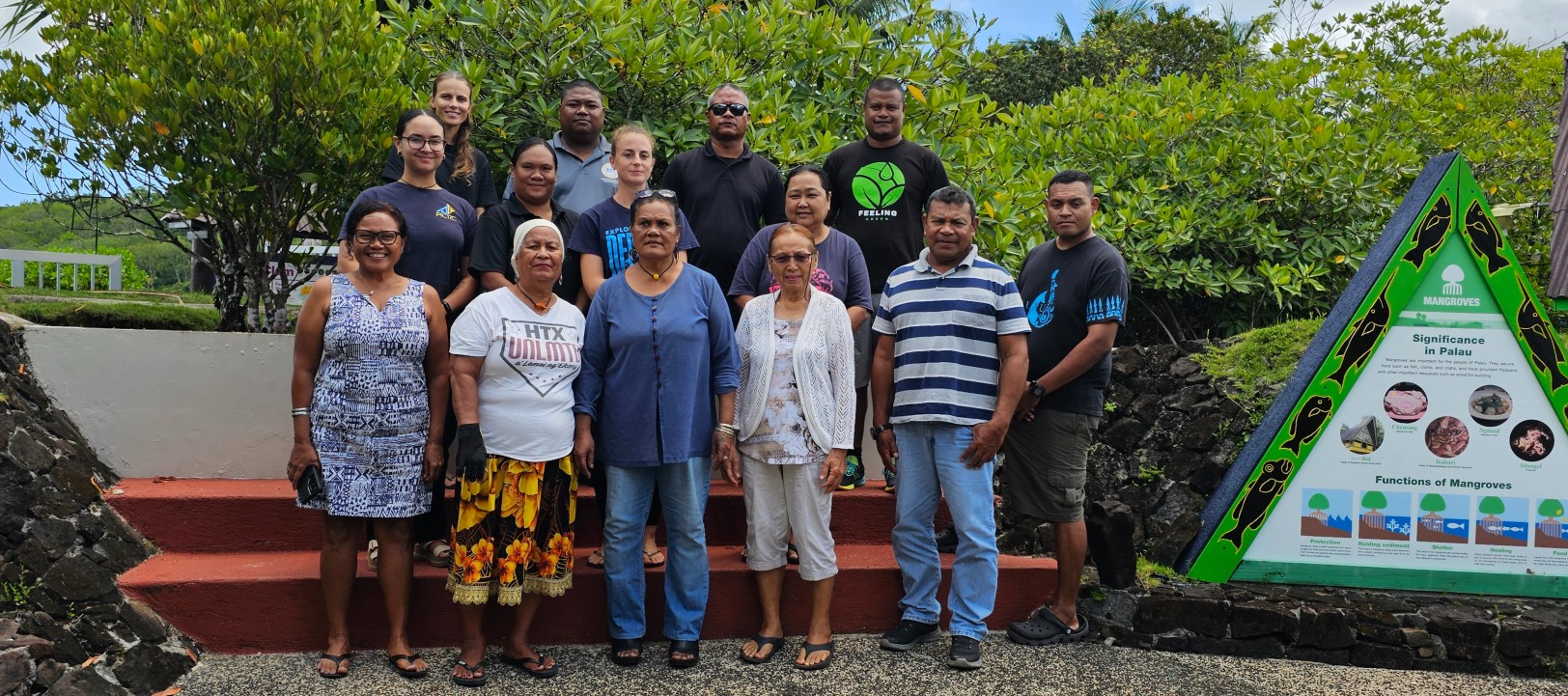- Research
PICRC presents updates and results from the Koror State Fisheries Monitoring Project to the Koror Southern Lagoon Coastal Fisheries Management Plan planning team
The Palau International Coral Reef Center (PICRC) presented updates and results of the Koror State Fisheries Monitoring Project at a meeting organized by the Palau Conservation Society (PCS) with the planning team of the Koror Southern Lagoon Coastal Fisheries Management Plan (KSLCFMP) on March 18th, 2024. The KSLCFMP was developed for the Koror State Government (KSG) by the Palau Conservation Society (PCS), in consultation with the Bureau of Fisheries (BOF), PICRC, The Nature Conservancy (TNC), and the Palau Automated Land and Resource Information System (PALARIS) in 2021.
At the end of 2022, PICRC received funding from the Great Barrier Reef Foundation’s Resilient Reefs Initiative (GBRF RRI) to carry out research and monitoring of reef fish stocks in Koror state, to provide feedback and management on the KSLCFMP. From February 2023 to March 2024, PICRC conducted in-water reef fish stock surveys in Koror state, monitoring of reef fish landings at the JR5 fish market, a baseline assessment of a proposed MPA, stock assessments at three invertebrate recovery sites, and monitoring and research of a fish spawning aggregation site.
During the meeting, updates were provided for each monitoring aspect, including progress of data collection, processing, and analysis. Results from the Beab MPA baseline survey were presented, with the technical report already released on PICRC’s website. In addition, preliminary results from the invertebrate stock assessments, fish landing monitoring, and fish aggregation survey were shared, with some recommendations to KSG on the measures proposed in the KSLCFMP.
From the Beab survey, it emerged that coral cover was lower inside the proposed MPA compared to the selected reference site. In addition, coral recruits were lower in Beab in the reef flat compared to the reference. Edible macroinvertebrates abundance did not show significant differences, but the numbers were generally low compared to other areas with same habitat types. Fish abundance and biomass were higher in Beab compared to the reference area and it can be considered a valid reason for protecting this area. Most fish found were herbivores and fish from other trophic levels could benefit from the protection.
The next steps for this project include continuing data analysis and report writing for each of the monitoring aspects, including recommendations and feedback on the KSLCFMP. The final results from this project will be shared with KSG, the planning team and the local community.


